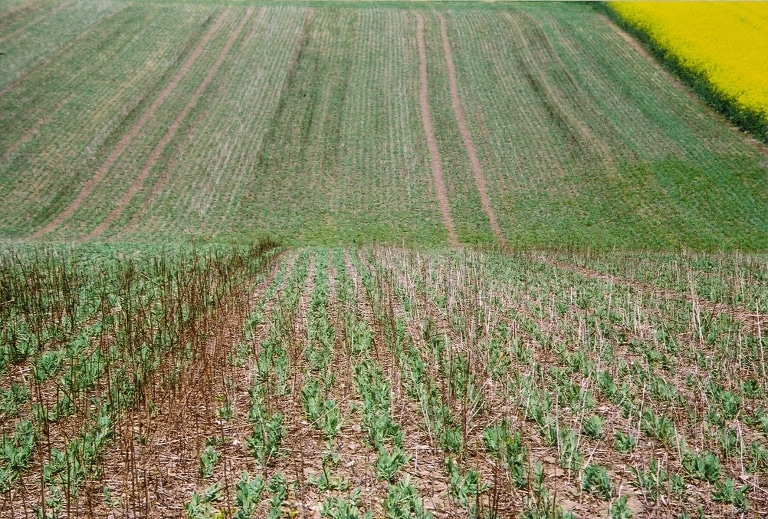Sep 25 2017
A long-debated agricultural question on whether no-tillage alone is adequate for preventing water pollution from nitrate has been answered by a new IUPUI study funded by the U.S. Department of Agriculture, and the answer is no.
 A no-till field. Credit: IUPUI
A no-till field. Credit: IUPUI
Researchers in the Department of Earth Sciences in the School of Science at IUPUI carried out a meta-analysis in order to compare runoff and leaching of nitrate from no-till and traditional tillage agricultural fields. Leaching and surface runoff are considered to be two vital transportation pathways for nitrate to reach and pollute water.
Nitrate has long been known as a widespread water pollutant due to its water solubility and mobility.
What we found is that no-till is not sufficient to improve water quality. In fact, we found that no-till increased nitrogen leaching.
Lixin Wang, Assistant Professor and Corresponding Author of the paper
The study proposes that no-till needs to be accompanied with other techniques, such as intercropping or cover cropping or rotation with perennial crops, in order to enhance water-quality and nitrate retention benefits.
After studying concentration of nitrate and nitrate load, or overall amount of nitrate, Researchers discovered that surface runoff from no-till fields contain a similar nitrate load to surface runoff from standard tillage fields.
In contrast, nitrate load through leaching was found to be greater with no-till fields than with standard tillage fields.
No-till leaves crop residue on the soil surface and confines soil disturbance except for tiny slits to add fertilizer. An estimated 20% of all croplands in the U.S. are under no-till management. It decreases soil erosion by avoiding tilling year after year, which results in the soil getting washed away into rivers and lakes. Because reducing soil loss decreases nutrient loss, it was anticipated that no-till would decrease water pollution, Wang said.
Overall, we found the adoption of no-till resulted in increased nitrate loss via leaching due to the frequent occurrence of macropores, such as those created by dead roots and earthworm burrows, in soils that have been under long-range no-tillage management.
Lixin Wang, Assistant Professor and Corresponding Author of the paper
Researchers observed how nitrate loss via surface runoff and leaching were impacted by various other factors, including rainfall variability, aridity, crop species, duration of tillage, soil texture and fertilizer type.
The research results are presented in a paper, "Impacts of no-tillage management on nitrate loss from corn, soybean and wheat cultivation: A meta analysis," that was featured in the September 21st Scientific Reports journal. The research presented is in association with Pierre-André Jacinthe, the key Principal Investigator of the USDA project and a Professor in the Department of Earth Sciences; Lin Li, a Professor in the Department of Earth Sciences; Pam Martin, a Professor in the Department of Earth Sciences; and Stefani Daryanto, a Postdoctoral Researcher, who is the Chief Author of this paper.